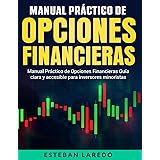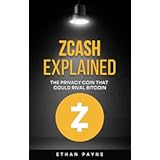The journey into Bitcoin mining can often feel like navigating a high-stakes financial frontier. Many individuals, like the speaker in the accompanying video, embark on this endeavor, investing substantial capital and time to secure a piece of the digital gold. With a personal investment exceeding $153,000 into 25 Bitcoin mining machines and 35 mining NFTs over a year and a half, the experience shared provides a robust framework for assessing the current landscape. As the Bitcoin halving approaches in 2024, the central question for many aspiring miners is often whether it’s truly too late to start.
At the time of recording, Bitcoin’s price was hovering around $68,554, having recently seen highs above $71,000. Such price fluidity is a constant in the crypto market, influencing mining profitability directly. Understanding these dynamics becomes crucial, particularly when considering the significant changes heralded by the upcoming halving event.
Navigating the 2024 Bitcoin Mining Landscape
A comprehensive Bitcoin mining setup, like the one highlighted, demands a significant capital outlay and strategic deployment of hardware. The speaker’s array of machines, totaling 3.55 petahash, showcases a blend of established and cutting-edge ASIC miners. These include a mix of 7 S19 Pro 110 terahash, 9 S19J Pro 104 terahash, 3 S19K 120 terahash, and 6 S21 280 terahash units. Each model contributes a specific level of processing power, measured in terahash (TH) or petahash (PH), where 1,000 TH equals 1 PH. These metrics are fundamental in calculating a miner’s potential share of the global network’s block rewards.
Alongside physical hardware, digital assets like mining NFTs offer another avenue for participation. The speaker’s portfolio includes 10 Alpha Shares Mining Co NFTs and 25 Fraction Mining NFTs. These innovative financial instruments allow investors to gain exposure to mining revenue without the direct operational complexities of managing physical machines. The capital raised from NFT sales is typically used to purchase and operate mining rigs, with returns distributed to NFT holders, offering a fractional ownership model in large-scale mining operations.
Pre-Halving Profitability: A Snapshot
Before the halving, the speaker’s diversified mining operation generated a substantial income. Monthly revenues reached $10,911, translating to approximately 0.15 BTC. After accounting for around $3,200 in monthly hosting and electricity costs, the net profit stood at an impressive $7,721 per month. This tangible data point illustrates that, even with significant operational expenses, Bitcoin mining has historically been a lucrative venture for those with substantial investments and efficient setups.
Over an 18-month period, the operation mined 2.65 BTC, valued at over $183,000 at the current Bitcoin price of $68,500. While the initial investment in machines and NFTs was $153,000, and $38,000 was spent on hosting, the current resale value of the equipment was estimated at $74,000. This depreciation is a common factor in hardware-intensive industries, especially in a rapidly evolving tech sector like crypto mining. However, when combining the mined Bitcoin and the residual value of the assets, the total liquidation value reached $257,000, yielding a net profit of $66,000 if all assets were to be sold immediately. This outcome underscores the potential for substantial returns, even when factoring in hardware depreciation and operating costs.
The Bitcoin Halving: Economic Impact and Miner Strategies
The Bitcoin halving, an event occurring approximately every four years, is a pivotal moment in the cryptocurrency’s lifecycle. Scheduled for around April 20th, this event will reduce the block reward from 6.25 BTC to 3.125 BTC per block. For miners, this means an instantaneous 50% cut in their primary source of revenue—the newly minted Bitcoin received for successfully verifying transactions and adding a new block to the blockchain. This phenomenon, set to occur at block number 840,000, has historically provoked both anxiety and excitement within the mining community.
Historically, the halving has been a significant catalyst for Bitcoin’s price appreciation over the subsequent 6 to 18 months. The reduction in new supply, coupled with increasing demand (especially from institutional investors and ETFs), often creates a supply-side shock. This dynamic contributes to a longer-term bullish outlook for Bitcoin’s price, which in turn can offset the reduced block rewards for miners. While immediate price doubling is rarely observed, the sustained upward pressure on Bitcoin’s value post-halving is a well-documented trend across previous cycles.
The Overlooked Power of Transaction Fees
Beyond the block reward, transaction fees represent an increasingly vital component of a miner’s income. Each Bitcoin block contains a bundle of transactions, ranging from standard transfers to more complex operations involving Ordinals or BRC-20 tokens. Miners who solve a block not only receive the block reward but also collect all the transaction fees associated with the transactions within that block. As activity on the Bitcoin network increases, especially during bull runs, transaction fees can skyrocket, providing a significant boost to miner profitability.
In a previous bear market year, 2023, the emergence of Ordinals briefly caused network congestion, leading to a doubling of mining profits for several weeks. This surge, occurring during a period of low market sentiment, serves as a powerful indicator of what might be possible in a full-blown bull market. When network activity is high, driven by new users, developers building on Bitcoin’s layers, and widespread trading, transaction fees are anticipated to rise dramatically. Conservative estimates suggest that in a euphoric bull run, transaction fees could add several additional Bitcoins to the effective block reward, potentially boosting the total remuneration per block significantly beyond the halved subsidy.
Post-Halving Profitability: Calculations and Projections
To illustrate the potential impact of post-halving market dynamics, consider the example of five Bitmain Antminer S21 units, representing 1 petahash. These machines consume approximately 17,500 watts. With a hosting rate of $0.08 per kilowatt-hour and a 2% pool fee, the hardware cost of $28,600 results in pre-halving raw revenue of $3,068 per month, yielding a profit of $2,060 per month after $1,000 in hosting and electricity fees. This translates to an impressive 7.2% monthly return on hardware cost.
Immediately after the halving, without any change in Bitcoin price or transaction fees, the monthly profit for these five S21s would drop to approximately $500. However, this is a baseline scenario that often does not account for the market’s response. Should Bitcoin’s price ascend to $100,000 within the next 6-9 months, the monthly profit would more than double to $1,211. If Bitcoin reaches $150,000, profits could surpass current pre-halving levels, even with the reduced block reward.
The true game-changer, however, lies in transaction fees. Should a bull run generate an additional 3 BTC in transaction fees per block, coupled with a $150,000 Bitcoin price, the monthly profit could surge to $5,500 for the same five S21 machines. In an even more aggressive scenario, with 8 BTC in transaction fees, profits could reach $7,657 per month. While these are speculative calculations, they highlight the profound sensitivity of mining profitability to both Bitcoin’s price and network activity, demonstrating how revenue can not only recover but substantially exceed pre-halving figures.
Beyond Mining Rewards: Machine Arbitrage and Equity Investment
A often-underestimated aspect of Bitcoin mining is the potential for machine arbitrage. This strategy involves purchasing mining hardware during bear markets or periods of lower demand and then selling it for a significant profit during a subsequent bull run when demand and prices for equipment soar. Historical data supports this theory.
For instance, the Bitmain S19, initially priced at around $2,000 when first released, commanded prices between $20,000 and $25,000 at its peak in 2021 when Bitcoin reached all-time highs of $65,000 and $69,000. Similarly, the Bitmain S9, an older generation machine released in 2017, could be acquired for as little as $25 per unit in bulk during the bear market of 2019-2020. By 2021, these seemingly obsolete S9s were flipping on platforms like eBay for $1,200 to $2,000 each. These examples directly contradict the notion that mining machines rapidly become worthless, demonstrating that strategic timing of purchases and sales can yield substantial returns, separate from the mined Bitcoin itself.
For those hesitant to engage directly with hardware, investing in Bitcoin mining companies offers an alternative exposure. Quantum Expeditions, an early-stage private company, presents an opportunity for equity investment through crowdfunding platforms like WeFunder. This allows individuals to invest at an early seed round valuation, currently at a $33.3 million cap, with the long-term goal of scaling to a billion-dollar company. Unlike publicly traded mining giants such as Marathon Digital or Riot Platforms, investing in Quantum Expeditions provides exposure to potentially rapid share price appreciation if the company successfully grows and eventually goes public or is acquired. This strategy appeals to investors seeking to capitalize on the growth of the Bitcoin mining industry without the direct operational burdens.







